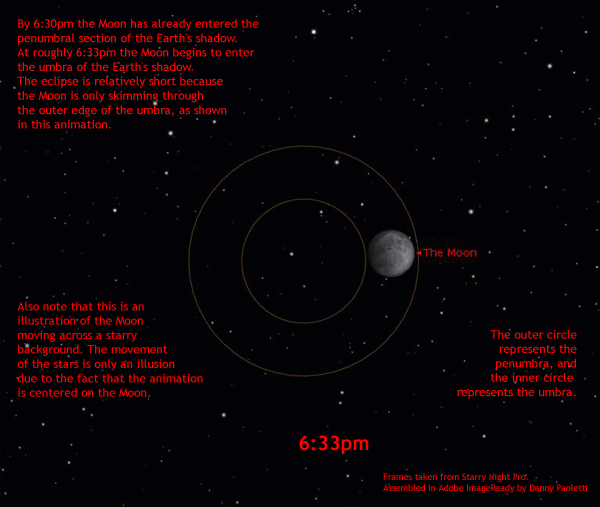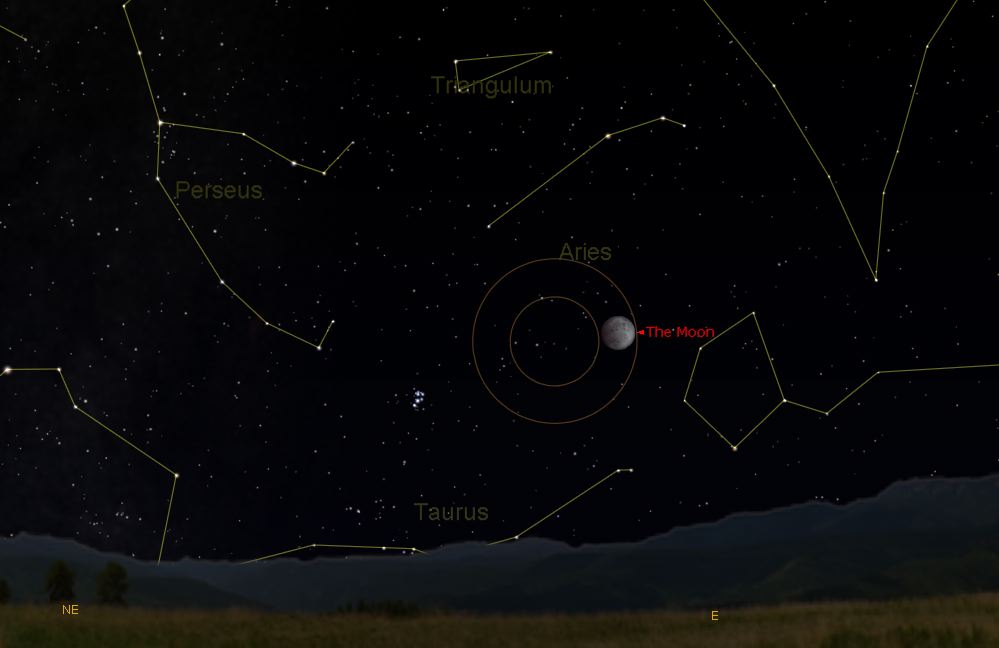08 November 2003 Total Lunar Eclipse
The UMD Astronomy Observatory Remains Closed
Fall 2024 Update: The UMD Astronomy Observatory remains closed to all public outreach activities.

Photographing the Lunar EclipseIf you would like to photograph the Lunar Eclipse, be sure to check out some of the following sites for tips and techniques.
|
What: Total Lunar Eclipse observing
Where: by the Sundial on McKeldin Mall on UMD's College Park campus
When: 08 November 2003, 7-9pm
Parking: Regent's Drive Garage, then 2 blocks south to McKeldin Mall
Public Transportation: Take the Metro (Green Line) to the College Park Station and ride the UMD Shuttle back to campus, get off at Stamp Student Union and walk south 1 block
pdf flier for folks to print and post!
Students and the public are invited to come view the Total Lunar Eclipse on 08 November with Dept. of Astronomy Observatory staff. Weather permitting, the eclipse will be visible with the un-aided eye (the bright full moon will turn dark and seemingly disappear as it passes through the Earth's shadow). Observatory staff will be on hand to answer questions about the event as well as having some smaller telescopes for visitors to look through. We will set up near the Sundial on McKeldin Mall. The event is free! If you like, bring a lawn chair (or blanket), binoculars and some light snacks (no alcoholic beverages!) and have a picnic under the stars!
Campus Visitor Information
Where to look in the sky...

You don't have to come to campus to see the Lunar Eclipse. You can stay at home as well. Just look east starting around 6:30pm. You should see the moon low in the east. As the evening progresses, the moon will get higher in the sky, but it will also be moving through the earth's shadow. Between 8 and 8:30pm, the Moon will be in the main part of the shadow (Umbra) and will be darkest.
Observing Elsewhere
- Howard Astronomical League -- at Howard Community College and at Alpha Ridge
- Crosby Ramsey Memorial Observatory
- Analemma Society
- MD Space Grant Observatory